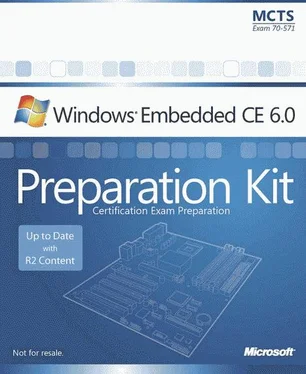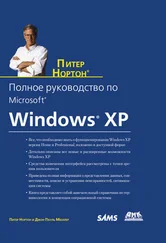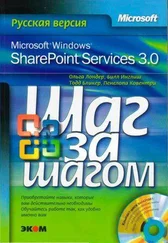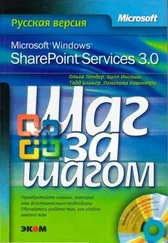CE Boot Loader Architecture<\/p> <\/div>
The underlying idea of a boot loader is to bootstrap a small program with pre-boot routines in linear, nonvolatile, CPU-accessible memory. Having placed the initial boot loader image on the target device at the memory address where the CPU begins to retrieve code through a built-in monitor program provided by the board manufacturer or a JTAG probe, the boot loader runs whenever you power up or reset the system. Typical boot loader tasks performed at this stage include initializing the Central Processing Unit (CPU), the memory controller, system clock, Universal Asynchronous Receiver/Transmitters (UARTs), Ethernet controllers, and possibly other hardware devices, downloading the run-time image and copying it into RAM according to the binary image builder (BIB) layout, and jumping to the StartUp function. The last record of the run-time image contains this function's start address. The StartUp function then continues the boot process by calling the kernel initialization routines.<\/p>
Although the various boot loader implementations differ in their complexity and the tasks they perform, there are common characteristics that Windows Embedded CE covers through static libraries to facilitate boot loader development, as illustrated in Figure 4-14. The resulting boot loader architecture influences how you can debug boot loader code. Chapter 5, "Customizing a Board Support Package," discusses boot loader development in more detail.<\/p>
Debugging Techniques for Boot Loaders<\/p> <\/div>
The boot loader design typically consists of at least two distinctive parts. The first part is written in assembly language and initializes the system before jumping to a second part written in C. If you are using a BLCOMMON-based architecture as illustrated in Figure 4-14, you might not have to debug assembly code. If your device is equipped with a UART, you can use the RETAILMSG macro in C code to send data over a serial output interface to the user for display.<\/p>
Depending on whether you must debug assembly or C code, the following different debugging techniques are available:<\/p>
■ Assembly code<\/strong>Common debugging techniques for the initial startup code rely on LEDs, such as a debugging board with seven-segment LEDs and UARTs for a serial communication interface, because it is relatively straightforward to access General Purpose Input/Output (GPIO) registers and modify the state of an input/output line.<\/p>
■ C Code<\/strong>Debugging is much easier at the C-code level because you can access advanced communication interfaces and debugging macros.<\/p>
■ Assembly and C code<\/strong>If a hardware debugger (JTAG probe) is available, you can use Platform Builder in conjunction with an eXDI driver to debug the boot loader.<\/p>
EXAM TIP<\/div>
To pass the certification exam, make sure you know the different techniques to debug the boot loader, kernel, device drivers, and applications.<\/p> <\/cite>
Lesson Summary<\/p> <\/div>
Debugging the boot loader is a complex task that requires a good understanding of the hardware platform. If a hardware debugger is available, you can use Platform Builder in conjunction with an eXDI driver for hardware-assisted debugging. Otherwise, consider using an LED board for debugging assembly code and C-style macros to output debug messages over a serial communication interface in C code.<\/p>
Lab 4: System Debugging and Testing based on KITL, Debug Zones, and CETK Tools<\/p> <\/div>
In this lab, you debug a console application added as a subproject to an OS design based on the Device Emulator BSP. To enable debugging, you include KdStub and KITL in the run-time image and configure corresponding target-device connectivity options. You then modify the source code of the console application to implement support for debug zones, specify initially active debug zones in the Pegasus registry key, and attach to the target device with the Kernel Debugger to examine the debug messages in the Output window of Visual Studio. Subsequently, you use the CETK to test the mouse driver included in the run-time image. To create the initial OS design in Visual Studio, follow the procedures outlined in Lab 1, "Creating, Configuring, and Building an OS Design."<\/p>
NOTE<\/div>
Detailed step-by-step instructions<\/div>
To help you successfully master the procedures presented in this Lab, see the document "Detailed Step-by-Step Instructions for Lab 4" in the companion material for this book.<\/p> <\/cite>
► Enable KITL and Use Debug Zones<\/p> <\/div>
1. Open the OS design project created in Lab 1 in Visual Studio, right-click the OSDesign name and select Properties to edit the OS design properties, select Configuration Properties and then Build Options, and then select the Enable KITL check box for the run-time image.<\/p>
2. In the OS Design property pages dialog box, also enable the Kernel Debugger feature, apply the changes, and then close the dialog box.<\/p>








